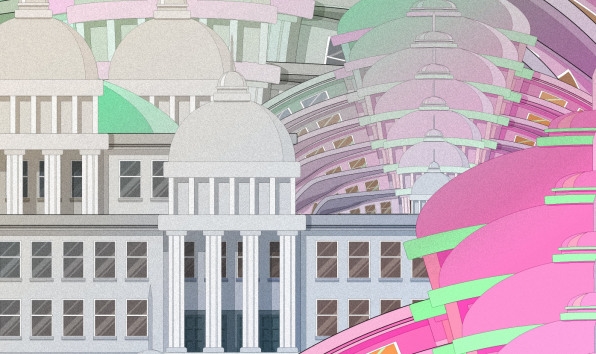How the government workforce can transform itself for the future
Hearing the words “stable” and “government” together can be a little hard to believe with everything going on in Washington these days.
The stability of government can, however, be seen in our cities, with a dedicated workforce that makes it happen. Public sector work comes with a trade-off of lower pay than in the private sector, but there is reduced churn from economic cycles and pensions haven’t disappeared. Firefighters, teachers, planners, and more are essential to serving our communities. Government has been more insulated from the trends whipsawing the workforce from offshoring to automation to variable scheduling, but the future of government work is quickly changing all around us.
The mission of government work is to serve the public interest and better the country—and the cities where we all live—by working on behalf of all of us pursuing and implementing policies that serve the public. Government employs a large chunk of the workforce, at nearly 17% of people employed. At the National League of Cities, we have explored the future of work in our research, particularly its impact broadly speaking on cities and the people that live in cities—exploring automation, AI, and general workforce shifts. We are also well aware of the ominous forecasts for the workforce, with job displacement nigh and numbers as high as half the workforce potentially wiped out by robots (or not).
We all depend on government services, and a well-functioning government can mean the difference between life and death or abject poverty and an opportunity for success. This is why it is so important to examine what the future of government work has in store. I recently moderated a panel at The Public Sector 2030 Workforce Summit and talked to people on the ground in cities—and working with cities—about what exactly the future of the public sector workforce portends. The primary themes the people I spoke with addressed centered on the impacts of artificial intelligence and algorithms on hiring practices; better understanding a younger, more diverse workforce; and weighing the choice between a tour of duty and lifelong employment.

AI will impact hiring practices in the public sector
By now, we are all familiar with the usage of artificial intelligence and algorithms to hire employees in the private sector. There are consultants galore that will develop systems for companies that want to automate every step of the process from initial résumé screens to the interview process to onboarding of new hires. Furthermore, AI can in the best of circumstances help eliminate hiring biases while in the worst of circumstances reinforce existing biases.
But, up until very recently, these tools had not really made their way into the public sector. Now human resources departments are starting to use enhanced digital tools in hiring. We expect government to be more transparent than the private sector. Clarity over what government weights in algorithms is imperative to identify upfront where biases may appear and work to mitigate these challenges.

Better understanding of a younger, more diverse workforce
The population has grown more diverse in recent decades, and making sure that our government workforce reflects this is critically important for a whole host of reasons. Government serves the public, and if the workforce does not reflect that public, there are clear blind spots that will—and have been missed—in service delivery for people of color and underrepresented community members.
Government work attracts many young people who hope to better their communities. But the barriers to entry can be high, from a lack of recruiting where people are—high schools, colleges, and community spaces—to long, arduous hiring processes that lead talented candidates to take jobs elsewhere. Broadly speaking, millennials are less concerned about compensation and more about impact. To respond to this, government needs to actively recruit the people that will make it better into the workforce. Real steps that can be taken are to make sure more people are working—and therefore invested—in their own communities by hiring local residents. And, while advanced skills are necessary for many roles, sometimes it’s more important to value lived experience than a master’s degree.

Choice between a tour of duty and lifelong employment
Traditionally, taking a public sector job meant making a choice to commit to government work for your entire career. The pay, benefits packages, pathways for advancement, and culture structurally pointed toward success directly correlating to longevity of service. The big question is whether in order to do good and advance a public service mindset it is necessary to only pursue work in the public sector for a full career, or can a mix of public, nonprofit, and private sector work serve people and the government in different ways?
This is an ongoing debate within public sector workforce circles, with compelling evidence made both ways. The variety of work available from a public sector perspective is stunning. People need to better understand the vast array of public careers that even exist—veterinarians, planners, police, and engineers all call the public sector their home. By increasing diversity and bringing a more representative sample of younger workers into the public workforce, the combination of experience and newness can be quite beneficial. If people more readily understand the opportunities, the future could be very bright for the public workforce. Government service in all forms, whether for a period of a few years or a full career, should be celebrated and supported.
And, as the multi-decade resurgence of cities has taken place throughout the U.S., younger workers are increasingly drawn toward mission-driven, impactful careers. This creates an exciting opportunity to attract and retain talent in our communities. In the cities where local governments have created inclusive, flexible environments that promote employee growth and opportunities, the public sector has seen dividends accrue. Let’s all recommit to public service to drive impact in our communities.
(39)



